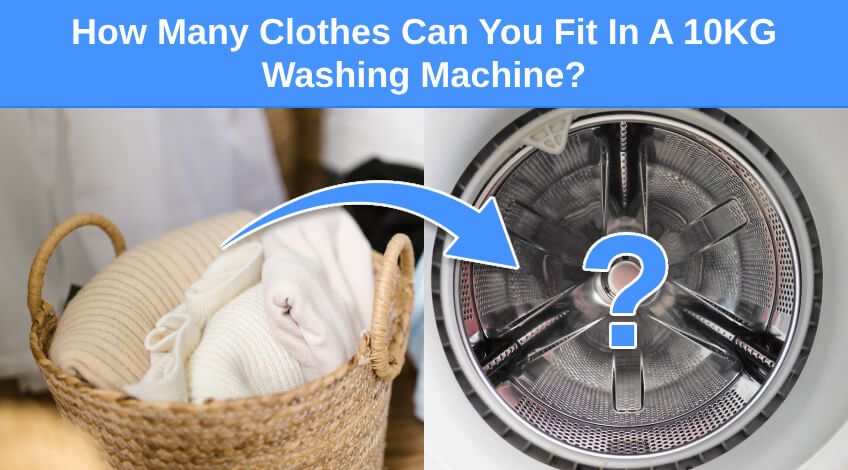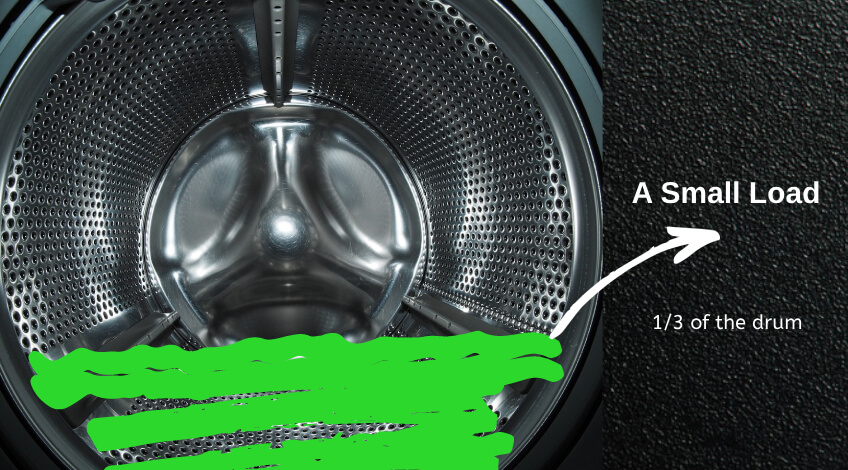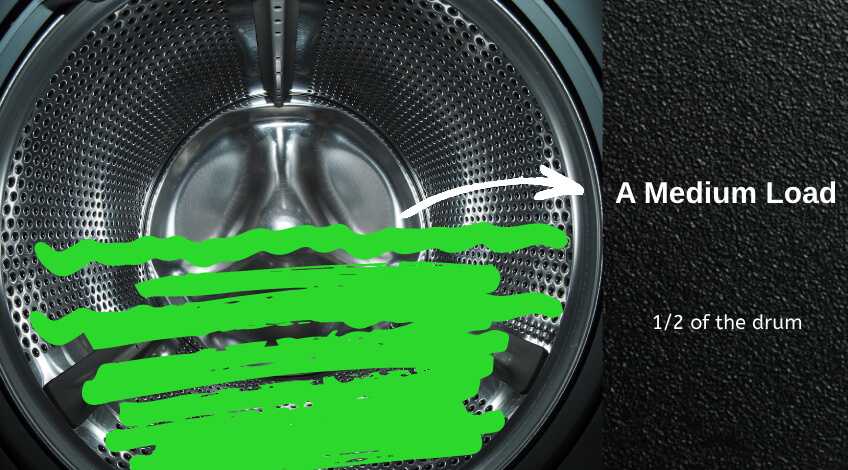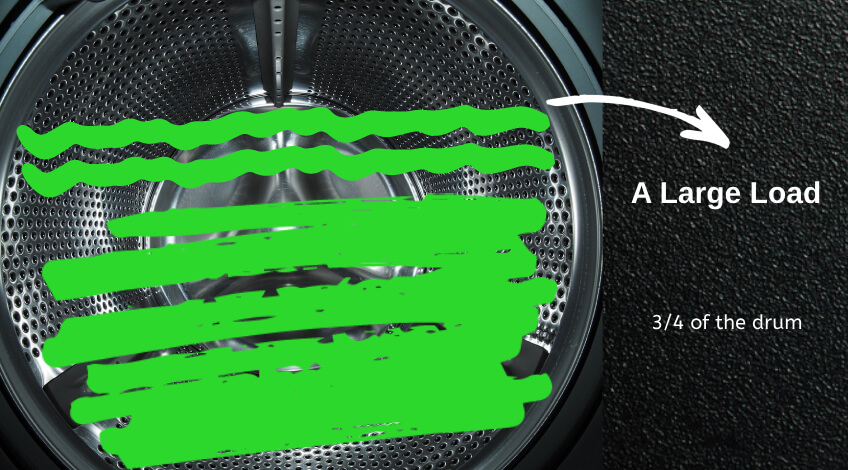
How Many Clothes Can You Fit In A 10KG Washing Machine?
If you’ve ever wondered how many clothes you can cram into a 10KG washing machine, you’re not alone.
Whether you’re doing laundry for a bustling household or just curious about optimising your washing routine, we are here to help!
Washing machines that have a capacity of 10KG can wash multiple clothes in just one load and are perfect for large households. The actual number of clothes it can wash will depend on the weight of each item.
In this article, we’ll explore the ins and outs of loading your 10KG washing machine efficiently to ensure your laundry comes out fresh and clean!
How Many Clothes Can You Put In A 10KG Washer?
Washing machines with a 10KG capacity and above are laundry powerhouses, capable of handling numerous garments in a single cycle. However, a common misconception is that you should fill the drum to its full capacity every time, which shouldn’t be the case.
In fact, while you can theoretically stuff 10 kilograms of clothing into the drum, it’s not always the wisest choice.
The golden rule of laundry is not to underload or overload your machine. An ideal laundry load typically fills about half to three-quarters of the drum, roughly equivalent to 5KG – 7.5KG in a 10KG washer. It’s important to follow this range for efficient washing.
So, before you start your washing machine, either weigh your clothes or eyeball the drum to ensure you’re not exceeding the recommended 3/4 full mark to achieve an efficient and effective laundry session.

Average Weight Of Clothes In Your Wardrobe
As mentioned earlier, the most accurate way to put just the right amount of clothes in your washer is by weighing them.
To help you estimate the right amount of laundry to put in your washer, here’s the average weight of some common clothing items:
| Clothing Item | Average Weight (kg) |
|---|---|
| T-shirt | 0.2 kg (200 grams) |
| Trousers | 0.7 to 0.9 kg (700 to 900 grams) |
| Dress | 0.3 to 0.8 kg (300 to 800 grams) |
| Sweatshirt | 0.5 to 0.7 kg (500 to 700 grams) |
| Blouse | 0.2 to 0.3 kg (200 to 300 grams) |
| Shirt | 0.2 to 0.3 kg (200 to 300 grams) |
| Shorts | 0.2 to 0.4 kg (200 to 400 grams) |
| Socks (pair) | 0.05 to 0.1 kg (50 to 100 grams) |
| Underwear (pair) | 0.05 to 0.1 kg (50 to 100 grams) |
Using these average weights, you can estimate how many items you can comfortably fit into your 10KG washing machine:
| Washing Machine Capacity (& recommended load) | Clothing Item | Maximum Quantity |
|---|---|---|
| 10KG Washer (5KG to 7.5KG) | T-shirt | Up to 37 |
| Trousers | Up to 9 pairs | |
| Dress | Up to 13 | |
| Sweatshirt | Up to 12 | |
| Blouse | Up to 30 | |
| Shirt | Up to 30 | |
| Shorts | Up to 25 pairs | |
| Socks (pairs) | Up to 100 pairs | |
| Underwear (pairs) | Up to 100 pairs |
Remember, these are just estimates; the actual number will depend on factors like garment size and fabric!
Examples Of Combinations Of Clothes You Can Wash In One Load
Here are some practical examples of clothing combinations that you can wash together in a 10KG washer:
- 9 sweatshirts and 8 T-shirts
- 17 shirts and 5 blouses
- 11 dresses and 6 T-shirts
- 6 sweatshirts and 7 dresses
- 14 T-shirts and 11 blouses
- 4 trousers and 7 shorts
TIP: It’s best to sort your items by category. Wash tops together and bottoms separately for the best results.
Eyeballing Your Washer’s Drum
If you don’t have a scale or simply prefer a quicker method, you can always eyeball it. Just remember the recommended load level:
More than 1/2, but not exceeding 3/4 of the washing machine’s drum.
Here’s a visual guide to help you understand what underloading, the minimum, and the maximum loads look like:
Underloading:

Minimum Load:

Maximum Load:

NOTE: Following these recommendations ensures efficient washing, leaving your clothes thoroughly cleaned, and your washing machine in optimal condition.
Recommended Minimum and Maximum Loads For 6KG To 11KG Washers
For a quick reference, here’s an overview of the recommended load sizes for washing machines with capacities ranging from 6KG to 11KG:
| Weight Of Each Load Size By Capacity | Minimum Load | Maximum Load |
|---|---|---|
| 6KG Washing Machine | 3KG | 4.5KG |
| 7KG Washing Machine | 3.5KG | 5.25KG |
| 8KG Washing Machine | 4KG | 6KG |
| 9KG Washing Machine | 4.5KG | 6.75KG |
| 10KG Washing Machine | 5KG | 7.5KG |
| 11KG Washing Machine | 5.5KG | 8.25KG |
Will A 10KG Washer Fit Your Needs?
A 10KG washing machine is an excellent choice for large households. If you have a smaller or medium-sized household but desire to do fewer loads, a 10KG washer might still be a valuable addition to your laundry routine.
However, it’s crucial to consider various factors when purchasing a washing machine, including your budget, specific needs, and desired features.

Make sure to do your research and avoid impulsive shopping decisions. A well-informed choice ensures that your washing machine meets your needs while providing efficient and effective laundry results.
- Product 1: Quick Dry Cycle
- Product 1: Heatpump Technology
Keep Your Clothes And Washer In Great Shape!
A 10KG washing machine can handle a substantial amount of laundry, but it’s essential to strike the right balance between underloading and overloading for the best results.
Whether you choose to weigh your clothes or simply eyeball the drum, following the recommended load guidelines will help you achieve clean and fresh laundry every time. So, make the most of your washing machine’s capacity and enjoy hassle-free laundry days!
Do you have questions? Feel free to ask them below!
SEE ALSO: How To Wash Laundry Less Often (tips to save money & time)
Frequently Asked Questions
You can fit approximately 5KG to 7.5KG of laundry, which is about half to three-quarters full, for efficient washing in a 10KG washing machine.
A good washing machine typically ranges from 7KG to 9KG in capacity, suitable for most households.
For a family of 5, a washing machine with a capacity of 9KG to 10KG is generally a good size to handle the laundry needs efficiently.
Yes, a 10KG washing machine is big enough for most households, including larger families, as it can handle substantial laundry loads.
You can tell if your washing machine is overloaded when the laundry load fills more than three-quarters of the drum’s capacity. Exceeding this range will lead to inefficient washing.





